

We are now in October and while many varieties have been picked, the later maturing varieties are approaching harvest time.
Below: left - right: Crimson Crisp - Daliclass - Breaburn 'Mariri Red'
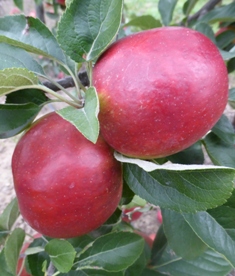
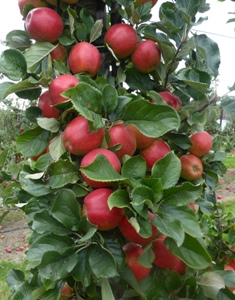
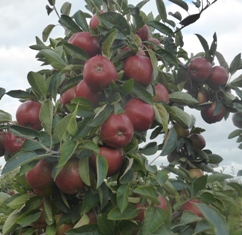
October brings shorter days...last night (Thursday) it was dark as I set off for a national Fruit Show committee meeting.
The English Apple Man has had a busy, but very enjoyable week. Monday was all about health; a routine visit to the osteopath (once every 2 months) to make sure the 'old body' is functioning satisfactorily ....on to the chiropodist...she makes a much better job of my toenails than I can, and I don't have to bend (and struggle) with the nail clippers. Next stop; the optician to get my (relatively) new glasses fixed after an altercation with the car door which sheared one arm off!
Did you take out the insurance cover, said Kelley at Boots Opticians...'not sure' said I; hmmm seems not...new frames that's £95...."so what would the insurance cover have cost ? ....£25....buying experience is expensive.....
By Tuesday I am fully functioning and off early to meet up with my friends Brian & Norma Tompsett. We are in the process of making a film guide to demonstrate how to produce a 'show sample' of apples (could also be pears) for The National Fruit Show. The inspiration for the film came from NFS Chair Sarah Calcutt and will in time be added to the new National Fruit Show website allowing prospective entrants and other visitors to The NFS website a better understanding of the 'finer points' involved in creating a 'show sample' of 3 'identical' trays of fruit.
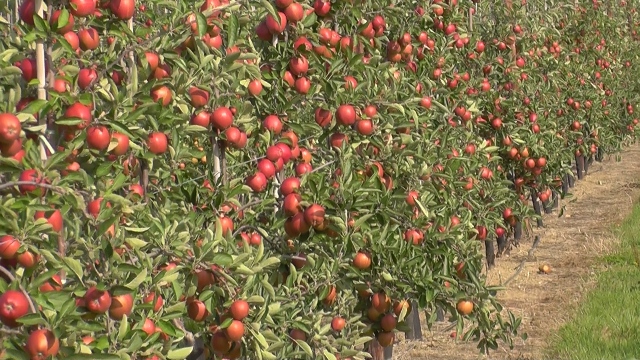 Choosing a 'Mariri Red' Braeburn orchard; 'they' will not be picked for another week, allows Brian & Norma sufficient fruit to choose from the best of the crop...it is a meticulous task....starting with an assessment of the fruit size. The size for a dessert class show sample must be either; 65mm-70mm or 70mm-75mm. Once the decision has been made which rows look the most promising, they set of to pick the fruit.
Choosing a 'Mariri Red' Braeburn orchard; 'they' will not be picked for another week, allows Brian & Norma sufficient fruit to choose from the best of the crop...it is a meticulous task....starting with an assessment of the fruit size. The size for a dessert class show sample must be either; 65mm-70mm or 70mm-75mm. Once the decision has been made which rows look the most promising, they set of to pick the fruit.
Before starting picking, bubble foam is placed in the bottom of the picking bucket to reduce any scuffing on the bottom of the bucket. Picking requires 'eyeing up' the potential apples/s and carefully measuring for the correct size.
The chosen apple/s must be of even red colour and free from blemish.
Below: left to right; bubble foam in the bottom of the picking bucket; Norma assessing fruit for size; checking the apple before picking
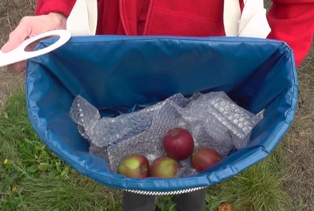
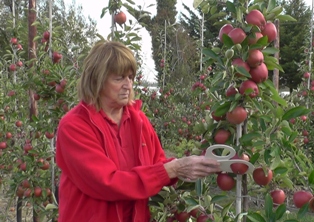
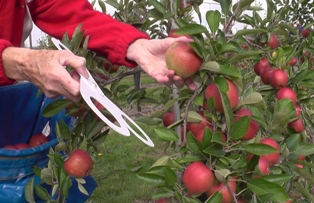
Below: left to right; 'just picked' - 'gently into bucket' - 'chosen apples in picking bucket'
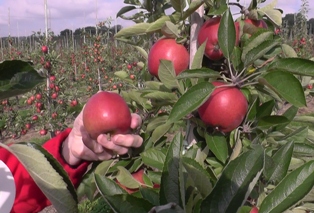
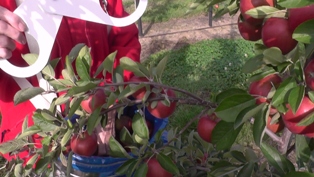
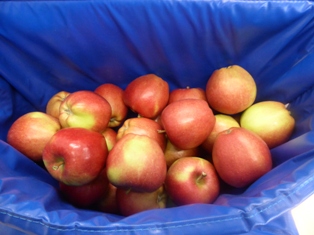
Once picked (just half a bucket to minimise risk of bruising/blemish), the fruit is taken to a selection point and selected for size and quality into a tray.
Below: left to right; selecting the apples; placing gently into field tray; selection 'nearly complete'
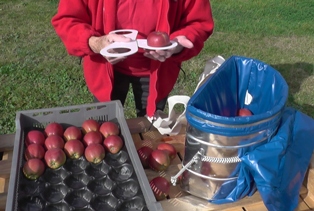
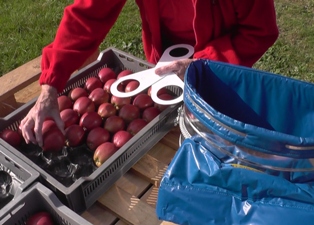
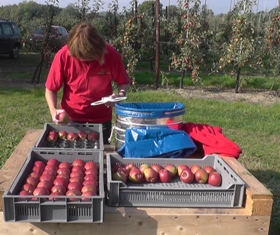
Once enough fruit has been picked to achieve the 'mandatory' three trays in a show exhibit, the field trays are taken back to the packhouse for final selection into show trays; normally its best to pick 6 trays to allow for re-selection back at the packhouse.
Below: left to right; Norma is carefully selecting apples that are uniform in colour, size and shape and free of blemish; placing show fruit carefully into a tray; Mariri Red Braeburn exhibit ready for the 2016 National Fruit Show
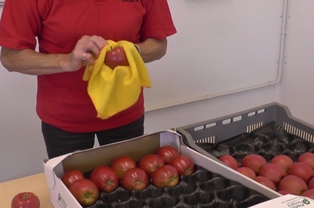
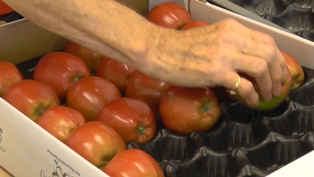
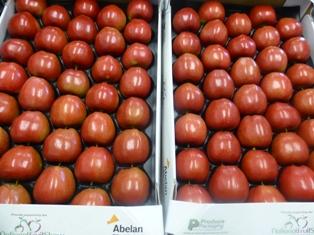
Selecting the final apples into a 'show tray' requires an experienced 'eye' picking out the most uniform colour and once again checking the correct size - if an apple fails to meet the designated size, it will lose marks when the Judges gather for Judging on the day before the show opens; uniform shape and freedom from pest and blemish are mandatory requirements; anything less than perfect is at risk of losing marks. Judges also 'cut' one apple from each exhibit to check for internal breakdown.
Below: left; Before leaving Bardsleys these superb Gala were waiting to be graded - and - right; Apple Logistics lorry
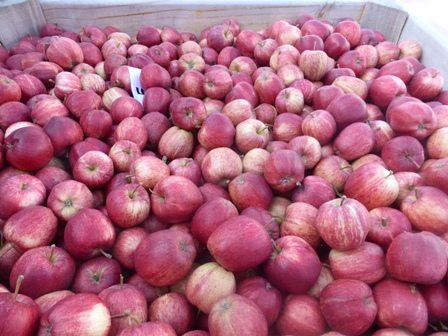
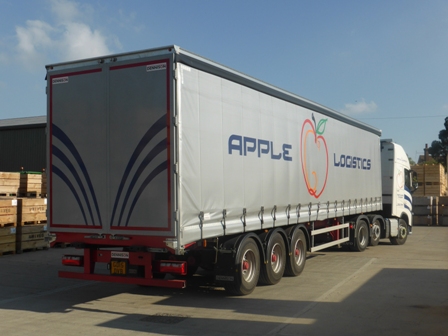
Apple Logistics move large quantities of apples & pears around the countryside on behalf of UK growers. Click to visit Apple Logistics website.
Wednesday...
A social day; my wife and I took our friends David & Valerie to The Spa Hotel in 'Royal Tunbridge Wells' for afternoon tea. Our treat for David's birthday in early September.
Thursday and off early again to East Kent to take photos of apples at Lower Goldstone Farm where Clive Chandler took me into orchards with Daliclass, Crimson Crisp, Braeburn and Jazz apples 'nearing harvest' - some of the Daliclass and Crimson Crisp have had a 'first pick' and the Braeburn is on schedule for harvest in a week's time. The Jazz will get a first pick in the third week of October.
Achieving good red colour has been difficult on many varieties this year; in previous EAM Journals the lack of 'day / night' temperature contrast has been highlighted. As we get into the 'late harvest varieties' the challenge becomes greater. That is why growers are turning 'more and more' to higher coloured clones of the main varieties - Gala & Braeburn.
Up until Wednesday evening I had been maintaining my summer 'dress code' of shorts, but on Thursday morning made the reluctant (at the time) decision to wear a pair of trousers (I am a cords rather than jeans man) - just as well, as the cold wind blowing off the North Sea in East Kent (we were not to far from Sandwich) turned an otherwise respectable temperature for October into a decidedly cold place to be. Even Clive who should be 'acclimatized' to the East Kent weather was 'well wrapped up' and still showing signs of feeling the cold. Mind you he had come to meet me from a warm office...........
Anyway; I was glad I dressed in warmer clothing than on previous days....our first orchard had Crimson Crisp and Daliclass apples; both have had a first pick - the Crimson Crisp in this orchard and Daliclass in another orchard on the farm. The Daliclass we looked at are about to get their first pick.
Getting enough red colour 'on all the Daliclass apples on a tree' can be difficult; Clive said he picked a marketable (enough red) fruit in 2015 of 50 tonnes per hectare; as he said he is still learning about the variety and its full cropping potential in English conditions.
I last visited this orchard on 16th August when the Daliclass colour was very green; it has progressed but not on all apples and not on all trees.
Below: left; Daliclass on 16th August - and - right; Daliclass on 6th October
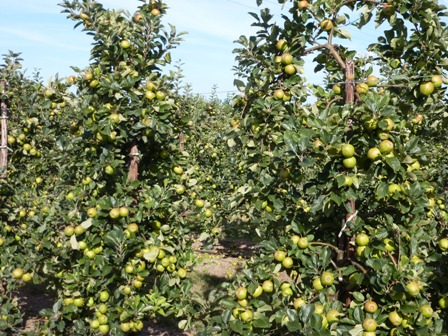
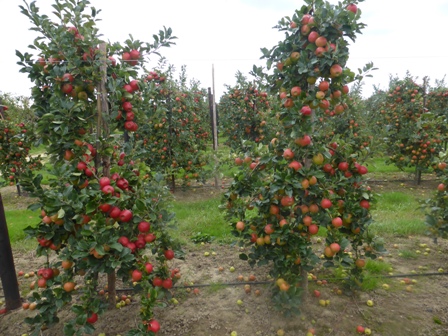
This week the colour is good on most apples, but still some way off on others....
Below: left; The colour when observed from the Southern aspect is clearly much better than; when viewed from the North direction; right
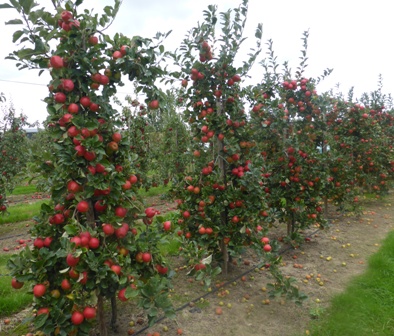
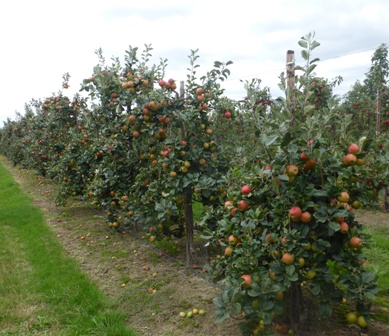
Below: left; Crimson Crisp in August and right; Crimson Crisp this week
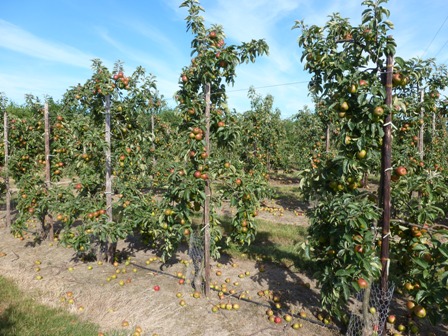
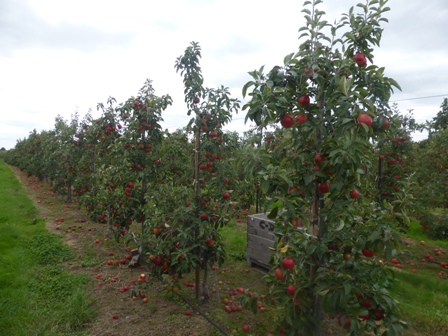
Crimson Crisp is a variety suitable for organic orchards. One of the sweetest scab resistant varieties.
From the Daliclass/Crimson Crisp orchard we moved a few hundred yards to a Mariri Red Braeburn orchard. Breaburn is a naturally very heavy cropping variety and Mariri Red a highly coloured Braeburn sport.
If allowed to 'over-crop' Braeburn can show 'biennial tendencies, especially on 'marginal soils' however the soil at Lower Goldstone is 'deep and of very high quality, so this is not seen as a problem by Clive Chandler as I asked if he suffers a 'drop off' in yield after a very heavy crop (like this year's) - with a smile he said "well in the past we have seen a drop from 80 tonnes per hectare, down to 60 tonnes per hectare"
Below: a nine year old Mariri Red Braeburn orchard at Lower Goldstone
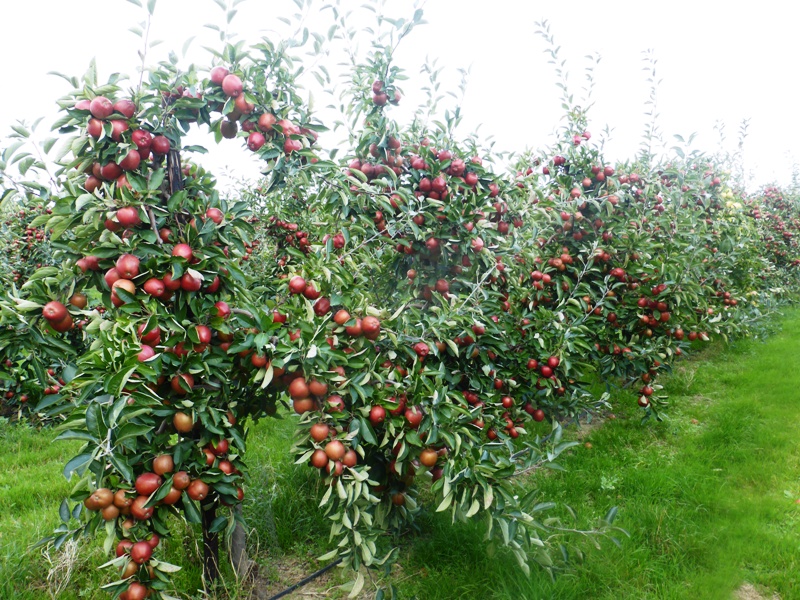
Below: left; Mariri Red - and - right; Mariri Red and Golden Delicious pollinators
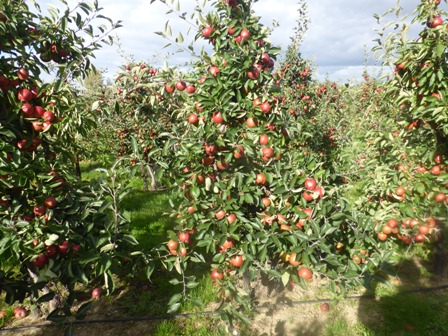
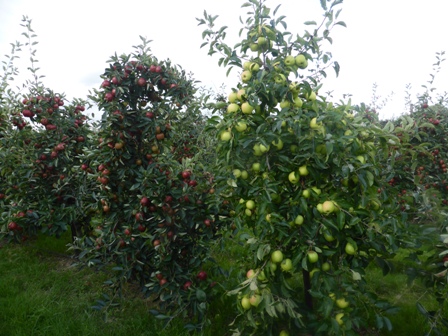
Below: Bladon Pippin stach pattern on 6th October
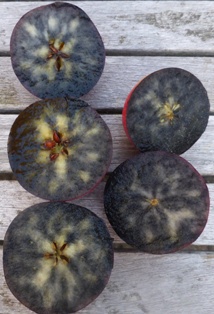 From Lower Goldstone, I drove to a trial site in East Kent where Bladon Pippin (a new variety owned by my friend Sean Morris) was ready for picking. The variety is similar to Cox but is later maturing and has brix (sugars) circa 3% higher than Cox. The starch level on 6th October is still above 70% (Cox at 70% are considered suitable for long term storage with starch that high)
From Lower Goldstone, I drove to a trial site in East Kent where Bladon Pippin (a new variety owned by my friend Sean Morris) was ready for picking. The variety is similar to Cox but is later maturing and has brix (sugars) circa 3% higher than Cox. The starch level on 6th October is still above 70% (Cox at 70% are considered suitable for long term storage with starch that high)
The flavour is very good and it makes delicious juice........
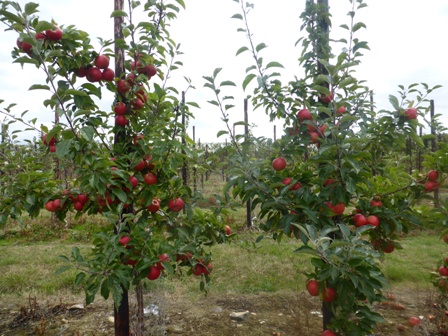
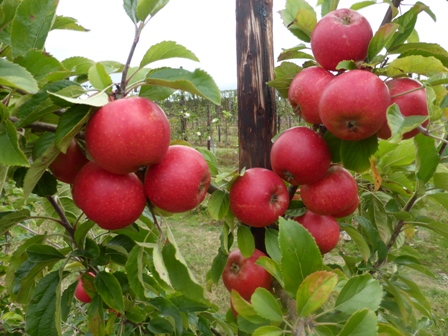
The National Fruit Show is now less than a Fortnight away......Wednesday & Thursday 19th & 20th October.
To visit the website; Click on 2016 National Fruit Show
Below: Rubens; a regular winner of The NFS tastiest Apple Competition........
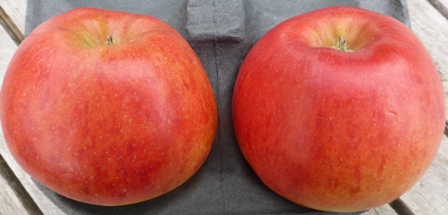
-------------------------------------------------------------------------------------------------------------------
![]() An article published in The Evening Standard makes interesting reading.....................
An article published in The Evening Standard makes interesting reading.....................
Supermarkets re-distributing food waste:
Sainsbury’s boss says supermarkets must be made to publish food waste data: Click on Sainsburys recycling food waste
That's all for this week......
Take care
The English Apple Man